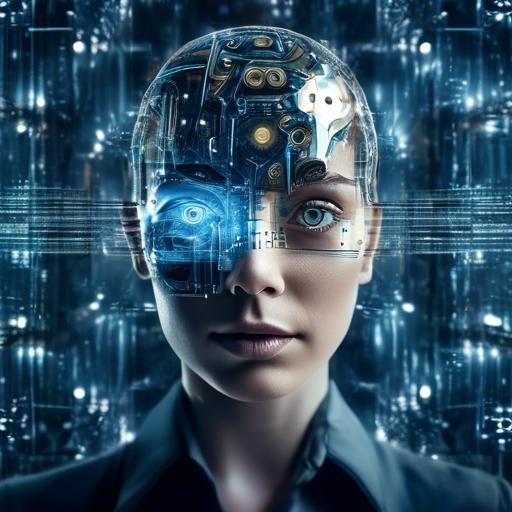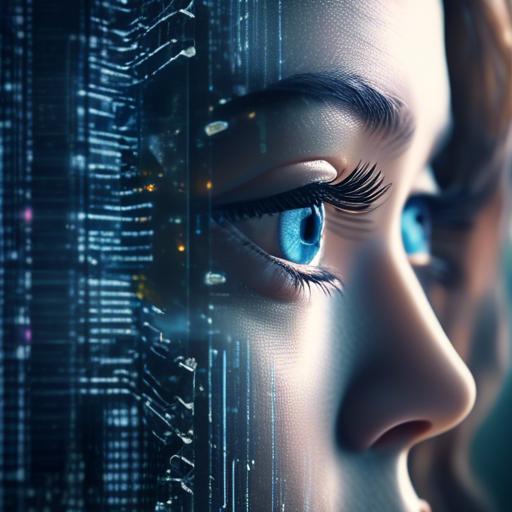In the vibrant mosaic of our ever-evolving world, diversity stands as a cornerstone of innovation, resilience, and growth. Imagine a workplace where varied perspectives interweave seamlessly to craft solutions both groundbreaking and inclusive. Yet, achieving such a dynamic mix can be a formidable challenge. Enter the unsung heroes of the digital age: AI tools. These sophisticated algorithms, far from being mere clusters of code, are becoming powerful allies in the quest to champion diversity. This article delves into the remarkable ways these AI tools can be harnessed to nurture an environment where every voice is heard, and every story finds its place. Let us embark on this journey to discover how technology can be a catalyst for creating a truly inclusive world, one byte at a time.
Table of Contents
- Creating Inclusive Algorithms for Fair AI
- Harnessing Machine Learning to Identify Bias
- Leveraging Natural Language Processing to Celebrate Cultural Nuances
- Training AI with Diverse Data Sets for Comprehensive Insights
- Using AI to Create an Equitable Recruitment Process
- Empowering Marginalized Communities through AI-driven Opportunities
- Implementing Continuous Monitoring for Bias-Free AI Performance
- Fostering a Culture of Collaboration between AI and Human Oversight
- Final Thoughts
Creating Inclusive Algorithms for Fair AI
To ensure that AI tools contribute positively towards creating inclusive and equitable environments, it’s imperative to design algorithms with consideration for diversity and fairness. One way to achieve this is by incorporating a variety of data sources that include diverse demographic groups. This prevents over-representation of particular groups and under-representation of others, allowing the algorithm to understand a wide spectrum of human behaviors and characteristics.
**Key practices to ensure inclusivity in AI algorithms include:**
- **Data Diversification**: Curate datasets from multiple demographic groups, socioeconomic backgrounds, and geographic locations.
- **Bias Mitigation**: Implement processes to identify and correct biases in data collection and algorithm development.
- **Inclusive Testing**: Conduct thorough testing with diverse user groups to identify any unintended biases or discrimination in AI outputs.
Another crucial aspect is collaboration. Ensuring that development teams themselves are diverse can bring unique perspectives and insights into the process. This allows for more comprehensive understanding and anticipation of potential issues that may arise in different cultural contexts. It’s not just about ethics but also about building robust AI that functions well across various scenarios and user groups.
| Strategy | Objective | Outcome |
|---|---|---|
| Diverse Data Collection | Capture a broad range of experiences | More accurate and fair algorithmic decisions |
| Bias Audits | Identify and mitigate biases | Reduction in discriminatory outcomes |
| Community Involvement | Gather feedback from diverse groups | Enhanced trust and validation |
It’s also beneficial to establish transparency in algorithm decision-making processes. By creating explainable AI models, users and developers can understand the rationale behind AI decisions. This transparency builds trust and allows users to identify and call out any unfair patterns or decisions.
Harnessing Machine Learning to Identify Bias
Machine learning has become a powerful ally in tackling the subtle and often hidden nuances of bias in various systems. By analyzing vast amounts of data, these advanced algorithms can detect disparities that might otherwise go unnoticed. **Supervised learning** techniques, for instance, can be employed to compare demographic statistics and outcomes, revealing potential inequities in decision-making processes.
One of the more transformative applications is in **recruitment processes**. Traditional hiring methods often suffer from unconscious biases, but AI can help create a more level playing field. Implementing machine learning algorithms to anonymize resumes—removing names, ages, and even educational institutions—can ensure that candidates are judged solely on their qualifications. A study found that companies using such techniques saw a significant increase in the diversity of their shortlisted candidates.
Beyond hiring, machine learning can monitor workplace environments to foster inclusivity. **Sentiment analysis** of employee communications can be used to detect biased language and suggest more inclusive alternatives. Additionally, companies can utilize **predictive analytics** to assess whether certain groups are disproportionately affected by turnover or lack of promotion, prompting proactive measures.
Moreover, machine learning models can also be applied to user feedback on platforms and services, ensuring diverse voices are heard. Patterns in customer reviews and feedback can be scrutinized to illustrate if certain demographics are consistently rating services lower, indicating an underlying bias that needs addressing.
| Application | Benefit |
|---|---|
| Resume Anonymization | Improves diversity in candidate selection |
| Sentiment Analysis | Promotes inclusive language in workplaces |
| Predictive Analytics | Identifies inequities in promotions and turnover |
| Feedback Analysis | Ensures diverse customer voices are acknowledged |
By integrating these machine learning tools, organizations can take significant strides towards a more diverse and inclusive culture. The key is to continually **monitor and refine algorithms** to ensure fairness, as even AI is not immune to bias. With vigilance and a commitment to equity, machine learning can transform workplaces for the better.
Leveraging Natural Language Processing to Celebrate Cultural Nuances
Artificial Intelligence, particularly **Natural Language Processing (NLP)**, offers dynamic opportunities to celebrate and promote cultural nuances that enrich our lives. By understanding and interpreting various languages, dialects, and colloquialisms, NLP-powered tools can uncover and respect the unique elements of different cultures seamlessly. This fosters an environment where **diversity is acknowledged and celebrated**.
Consider implementing NLP models trained on regional dialects and languages. These models can offer insights into:
- Idiomatic Expressions: Every culture has its unique way of expressing ideas. NLP tools can recognize and translate these expressions accurately, ensuring the essence is maintained.
- Sentiment Analysis: Culture heavily influences how emotions are expressed. By training sentiment analysis models on region-specific data, you can achieve a more nuanced understanding of textual emotions.
- Contextual Relevance: Understanding context-specific language use helps in providing better customer support and content personalization based on cultural norms and expectations.
Imagine the following benefits that organizations can harness:
| Enhanced User Engagement | Tailored content that resonates with diverse audiences. |
| Inclusive Work Environment | Fosters an atmosphere where linguistic diversity is acknowledged and valued. |
| Global Market Reach | Enables precise and culturally sensitive communication across borders. |
Moreover, incorporating diverse linguistic data can significantly enrich the training datasets for your NLP models. This diversity in data helps in creating more robust and versatile AI applications. It’s not just about understanding different languages but also appreciating the cultural context behind those languages. By doing so, organizations can develop AI tools that are not only **technically proficient** but also **culturally empathetic**.
As we progress, it’s essential to remember that **diversity and inclusion** are not just buzzwords but a path toward a more cohesive and understanding world. Leveraging NLP to celebrate cultural nuances is one way technology can contribute to this significant cause. With thoughtful implementation and continuous refinement, AI tools can promote an inclusive global community where every language and culture finds its recognition.
Training AI with Diverse Data Sets for Comprehensive Insights
Leveraging diverse data sets is crucial for training AI systems to provide comprehensive and unbiased insights. When a wide variety of data is utilized, AI can better reflect the complexity and richness of the real world, resulting in more accurate and equitable outcomes. This approach minimizes biases and ensures that AI tools serve a broad spectrum of users effectively, fostering inclusivity and fairness.
**Strategies for Ensuring Data Diversity:**
- Include Multiple Demographics: Make sure the data covers a range of age groups, ethnicities, genders, and socio-economic statuses.
- Geographical Representation: Collect data from various regions and cultures to ensure global applicability.
- Behavioral Data: Incorporate diverse user behaviors and preferences to capture different interaction patterns.
- Temporal Variation: Use data over different time periods to account for changes and trends.
Consider the following example highlighting the benefits of a diverse data set in AI development:
| Age Group | Region Covered | Impact Area | Outcome |
|---|---|---|---|
| 18-25 | North America | Social Media Usage | Diverse Content Recommendations |
| 26-40 | Europe | Healthcare Access | Improved Medical Predictions |
| 41-60 | Asia | Financial Services | Personalized Financial Advice |
Beyond the technical benefits, embracing data diversity in AI aligns with ethical standards and societal values. It promotes equity in AI assistance tools, allowing marginalized communities to benefit equally from advancements.
Creating rich, diverse data collections is a significant but rewarding task. It demands thoughtful sourcing and continuous effort but results in AI systems that are not only smarter but also more empathetic and democratic. This, in turn, propels the adoption and trust of AI-assisted tools, fostering a forward-thinking, inclusive society.
Using AI to Create an Equitable Recruitment Process
Artificial Intelligence (AI) tools are increasingly being leveraged to foster more diverse and inclusive workplaces. By automating many aspects of the recruitment process, AI can help eliminate biases that often influence human decision-making. Here’s how you can harness the power of AI to promote diversity in your hiring practices:
1. Bias-Free Job Descriptions
AI tools can scan and optimize job descriptions to ensure they are free from gendered or biased language that might discourage potential candidates from applying. These tools identify and suggest alternatives for words or phrases that may unconsciously favor one group over another, making your job listings more inclusive.
- Gender Decoder Tools – Identify gender-biased language.
- Text Analyzer Software – Suggest neutral language replacements.
2. Diverse Candidate Sourcing
AI-driven platforms can help in sourcing candidates from a variety of backgrounds by tapping into diverse talent pools. These platforms use algorithms to search for potential applicants on a global scale, ensuring a wider range of candidates.
| Tool | Function |
|---|---|
| LinkedIn Recruiter | AI-powered search for diverse candidates. |
| Entelo | Diversity sourcing and predictive analytics. |
3. Objective Screening
One of the most significant benefits of AI in recruitment is its ability to standardize and streamline the candidate screening process. AI can evaluate resumes and applications without the subjective biases that may affect human recruiters.
- Resume Parsing Tools – Objectively assess qualifications.
- Predictive Algorithms – Forecast candidate success based on relevant criteria.
4. Reducing Bias in Interviews
AI tools can also assist in the interview process by providing structured and standardized interview questions. Additionally, some platforms offer functionalities that analyze candidates’ responses in real-time, ensuring consistency and fairness.
- Structured Interview Platforms – Offer consistent questions.
- Real-Time Analysis – Evaluate responses objectively.
Empowering Marginalized Communities through AI-driven Opportunities
One of the most transformative aspects of AI technology is its potential to uplift marginalized communities by creating equal opportunities. Leveraging AI tools can democratize access to resources, foster inclusivity, and pave the way for a more diverse and equitable society.
**AI-driven initiatives** are increasingly being used to combat bias and promote diversity in various sectors. These tools can help identify and eliminate discrimination in hiring processes, enabling underrepresented groups to gain meaningful employment. For instance:
- AI Resume Screening: Diverse talent stands a greater chance of being noticed when AI can objectively assess skills and experience without human biases.
- Virtual Interview Tools: AI-driven virtual interviews can ensure that candidates are evaluated based on performance, not appearances.
Additionally, AI tools are revolutionizing access to education and training for marginalized communities. By providing customized learning experiences and resources, AI can empower individuals with the knowledge and skills needed to thrive in today’s digital economy. Consider the following benefits:
| Benefit | AI Tool |
|---|---|
| Personalized Learning | Adaptive Learning Platforms |
| Access to Resources | AI-Powered Digital Libraries |
| Career Training | Virtual Mentorship Programs |
**Healthcare** is another sector where AI is making a significant impact. AI-powered diagnostic tools and telemedicine services are bridging gaps in medical access for underserved populations. By providing timely and accurate diagnostics, these AI solutions are improving health outcomes for communities that previously had limited medical support.
The potential of AI in empowering marginalized communities is immense, yet the approach must be mindful and inclusive. As AI tools continue to evolve, it is crucial for developers and policymakers to ensure that these technologies are accessible and beneficial to all, driving us toward a future where diversity is not just an aspiration but a tangible reality.
Implementing Continuous Monitoring for Bias-Free AI Performance
Ensuring AI systems are free from biases is crucial to promoting diversity and fairness. Implementing continuous monitoring strategies plays a pivotal role in this process. These strategies include regular audits, bias detection algorithms, and user feedback loops.
- Regular Audits: Periodic reviews of AI decisions and datasets help identify potential biases. Internal and external audits should be conducted to maintain transparency and accountability.
- Bias Detection Algorithms: Advanced machine learning models can scan for discriminatory patterns in AI behaviors, flagging areas that require intervention.
- User Feedback Loops: Encouraging users to report biased outcomes can provide real-time insights and opportunities for immediate corrections.
| Strategy | Benefits |
|---|---|
| Regular Audits | Ensures transparency, identifies unknown biases |
| Bias Detection Algorithms | Automates bias identification, reduces manual workload |
| User Feedback Loops | Gathers real-world insights, promotes continuous improvement |
Furthermore, incorporating **diversity-focused data** during the initial training phase of AI models can preemptively reduce biases. This includes using datasets that reflect a wide array of demographics and social backgrounds. Organizations should ensure that their training data encompasses a broad spectrum of attributes like age, gender, ethnicity, and socioeconomic status.
Development teams must also be trained in **Ethical AI Practices**. Experts in human rights, ethics, and social sciences bring invaluable perspectives that technologists may overlook. **Cross-disciplinary collaboration** fosters a well-rounded approach to building truly unbiased AI tools.
Fostering a Culture of Collaboration between AI and Human Oversight
**Integrating AI tools into organizational workflows can drive innovation and efficiency, but it’s crucial to ensure these tools are designed and deployed with human oversight to foster a collaborative atmosphere. By marrying the analytical strengths of AI with human intuition and empathy, organizations can harness their full potential for promoting diversity.**
- **Ethical Algorithm Design:** One fundamental way to achieve this is by involving a diverse team of developers in the creation process. This can help in identifying and mitigating biases that might inadvertently seep into the AI models.
- **Regular Audits and Adjustments:** Human oversight is essential to regularly audit AI outputs. This ensures that the AI aligns with ethical standards and diversity goals, allowing for corrective measures if biases are detected.
- **Transparent Decision-Making:** Combine AI’s robust data analysis with human insight for decision-making processes. This not only increases trust but also ensures that diverse perspectives are considered, reinforcing a culture of inclusivity.
**Another approach to fostering collaboration between AI and human oversight is through targeted training programs. Educate employees on both the potential and limitations of AI tools, and stress the importance of their role in monitoring and guiding these systems.** Such training can empower them to work confidently with AI, enhancing their ability to spot biases and propose improvements.
| Aspect | Role of AI | Role of Human Oversight |
|---|---|---|
| Data Analysis | Process large datasets | Ensure ethical implications |
| Bias Detection | Automate bias identification | Contextual review and correction |
| Decision Making | Provide data-backed insights | Incorporate diverse perspectives |
**Promoting a culture of collaboration also involves forming cross-functional teams that include AI specialists, ethicists, and employees from diverse backgrounds. These teams can work together to ensure that the AI tools are being developed and used in a way that benefits everyone in the organization.** Through interdisciplinary cooperation, AI can become a powerful ally in fostering an environment where diversity and collaboration thrive.
Final Thoughts
In a world where diversity and inclusion are crucial for progress and innovation, AI tools offer a powerful way to promote and embrace the richness of varied perspectives and backgrounds. By harnessing the potential of AI to support diversity initiatives, we can create a more inclusive and equitable future for all. So, let’s continue to explore and leverage the capabilities of AI tools to celebrate the unique differences that make us stronger together. Together, we can pave the way for a more diverse and harmonious society. Let’s embrace the power of AI to truly promote diversity in all its forms.
































